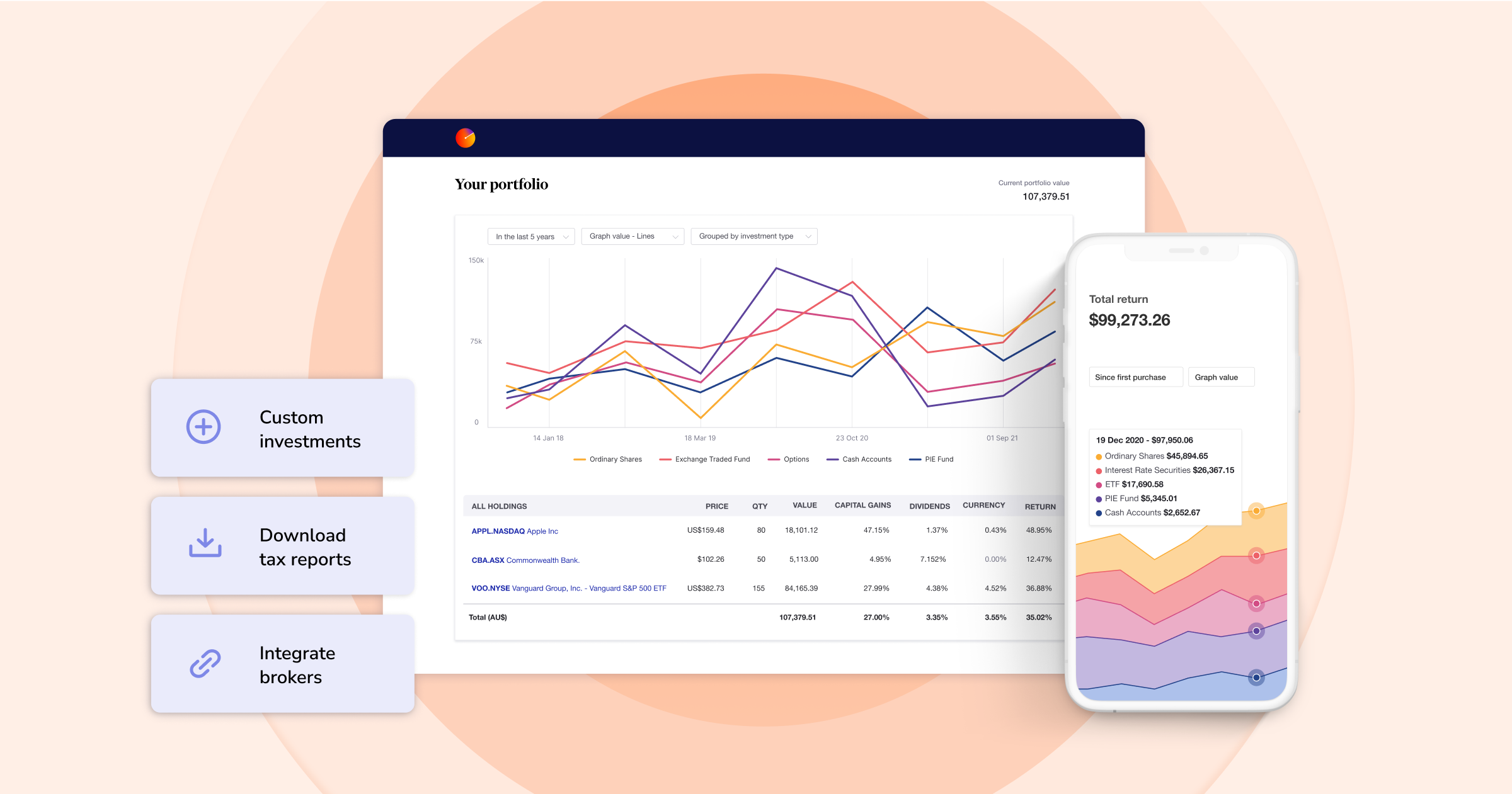What is a real estate investment trust (REIT)?
Real Estate Investment Trusts (REITs) are listed investment vehicles popular with Australian investors because they are both easy to access and can provide a regular income stream from an asset class which is usually different to the rest of their portfolio. This diversification feature is important when constructing any equity or fixed-income portfolio and the potential for REITs to deliver dividend income, often whilst taking on less risk than a share portfolio, makes these trusts well worth considering.

What is a REIT?
REITs offer investors an alternative to direct property investing by offering exposure to the property market through their stock portfolio. These trusts are actively managed and, like managed funds, pool together investor capital. Investors can use REITs to access a property portfolio which may include commercial, industrial, retail or a mix of these real estate assets, which are not generally available to individual investors. Commercial properties like offices, apartment buildings, shopping centres and hotels are particularly popular with investors. REITs may either invest in property locally or internationally. In Australia, REITs are known as A-REITs and are traded on the ASX.
While REITs have the characteristics of other investment trust structures, some have a "stapled security" mechanism that consists of two or more securities (usually a company and a trust) that are contractually bound to form a single unit. Stapled securities are therefore legally bound together so that they can't be sold separately. In the case of REITs, many property trusts have their units stapled to the shares of companies with which they are closely associated. Although the stapled security must be dealt with holistically, the individual securities that are stapled are treated separately for tax purposes. Such structures can provide higher growth opportunities but also be a higher risk investment than a traditional REIT, while potentially having extra tax implications for investors.
Costs of REITs
REITs are generally run by specialist property managers, responsible for selecting investment properties and managing tenants, maintenance and rental. This professional management can potentially offer significant benefits but comes at a cost, with management fees that may include both a base fee and a performance fee. There may also be additional fees such as acquisition and divestment fees. REITs which hold properties in foreign jurisdictions may also be subject to taxation by the relevant jurisdictions. Investors can find information on these fees in the REITs’ prospectuses and financial statements.
Types of REITs
Globally there are many types of REITs, which can be broadly classified by how they are traded (private versus public), type of assets (equity versus mortgage) and by sectors they operate in (retail, commercial, industrial). Initially, REITs in the US were primarily mortgage companies, investing in the debt used to finance real estate development. From there, equity REITs also gained popularity with investors who wanted to receive rental and gain income rather than mortgage payments. Asset classification remains a key division in the present with Equity REITs owning properties that provide lease income to unitholders; Mortgage REITs holding mortgage notes on properties, which allows them to collect principal and interest payments from the mortgage holders; and Hybrid REITs, which share characteristics of both of the others.
Most REITs specialise in one or just a few sectors, with REITs falling into the following common categories:
-
Office REITs – owning and/or managing commercial office real estate and leasing space in these properties to tenants or managing office buildings owned by third parties
-
Retail REITs – owning and leasing retail space in shopping centres and similar assets
-
Industrial – owning warehouses, factories and industrial parks and earning rental and management income from these industrial facilities
-
Hotel and leisure REITs – owning and / or operating hotels, cinemas and theme parks and, in some cases, leasing space in these properties to retailers and long-term tenants
-
Specialty REITs – these REITs own and collect rent from a mixed bag of properties such as childcare centres, caravan parks, old age homes and medical centres
-
Diversified REITs – a mixture of the above
Benefits of REITs
REITs offer investors instant access to a large property portfolio for a small upfront investment and may also offer diversification across property sectors, geographical locations and asset types. Even within the property sector, REITs tend to invest in a wide variety of property assets – offices, hotels, medical centres – with a spread of tenant types and lease maturities. While the value of these property assets may increase the net asset value of the REIT, these investment vehicles are primarily designed to provide a sustainable income stream, with monthly or quarterly distributions underpinned by regular rental income. However, it is important to note that higher income may involve higher risk.
By comparison to a direct residential or commercial property investment, REITs can be easily bought and sold on the ASX, like shares. And unlike direct property, they offer investors the ability to gradually build or sell part of your investment, rather than buying or selling an entire property. Further, REITs are professionally managed, either by an in-house team or a third-party property management firm, and therefore the individual investor does not need to worry about handling any property management functions.
Risks of REITs
However, REITs aren’t riskless investments as all real estate can be sensitive to macroeconomic factors and market cycles, impacting returns when the market environment worsens. Specifically, underlying assets like shopping centres may have high levels of debt, can lose major tenants or be poorly managed. The recent COVID lockdowns showed how susceptible office properties can be to staff working from home while increased on-line shopping and weak retail discretionary spending activity can have a big impact on retail rental conditions and demand for hotel rooms.
While most REITs allow investors to diversify their portfolios, this point can be oversold given that some REITs concentrate exclusively on a few large assets or a single sector, leading to higher risks. Another potential risk occurs when REITs borrow funds to buy or develop a property portfolio, creating high levels of gearing. While gearing can multiply capital gains when asset values rise, it can also multiply losses when they fall, as well as creating higher interest costs. Similar to a managed fund, it is vital that investors do their due diligence and examine the management team behind the investment. Be sure to look at the level of debt a trust holds.
What are the differences between REITs and unlisted property trusts?
Unlisted property trusts also offer investors access to commercial property and professional management, but the value of the investment is primarily influenced by movements in the commercial property market rather than by the broader share market. This can mean less volatility in the investment. There are two types of unlisted property trusts, open-ended property funds and fixed-term, closed-end property trusts (often referred to as syndicates).
Track the performance of REITs in your portfolio with Sharesight
Do you invest in REITs? Track the performance of your investments in real estate investmnet trusts with Sharesight, with Sharesight you can:
-
Track all of your investments in one place, including stocks, ETFs, REITs, mutual/managed funds, property and even cryptocurrency across your personal and retirement portfolios
-
Automatically track your dividend and distribution income from stocks, ETFs and mutual/managed funds
-
Run powerful reports built for investors, including Performance, Portfolio Diversity, Contribution Analysis, Future Income and Multi-Currency Valuation
-
See the true picture of your investment performance, including the impact of brokerage fees, dividends, and capital gains with Sharesight’s annualised performance calculation methodology
-
Easily share portfolio access with your accountant or financial planner for additional real time portfolio insights
Sign up for a FREE Sharesight account and get started tracking your investment performance (and tax) today.

FURTHER READING
The above article is for informational purposes only and does not constitute a product recommendation, or taxation or financial advice and should not be relied upon as such. Please consult with your financial adviser or accountant to obtain the correct advice for your situation.

Is your client data at risk? 5 questions to ask your tech provider
Protect client data with these five essential cybersecurity questions every financial adviser should ask their technology providers.

Get the full Sharesight experience with the app and web platform
Learn how to get the most out of Sharesight by using the app and web platform together for performance tracking, analysis, reporting and tax planning.

See clients' full wealth picture with Sharesight and myprosperity
Connect Sharesight and myprosperity to see clients’ full financial picture, streamline management, and deliver more insightful advice.